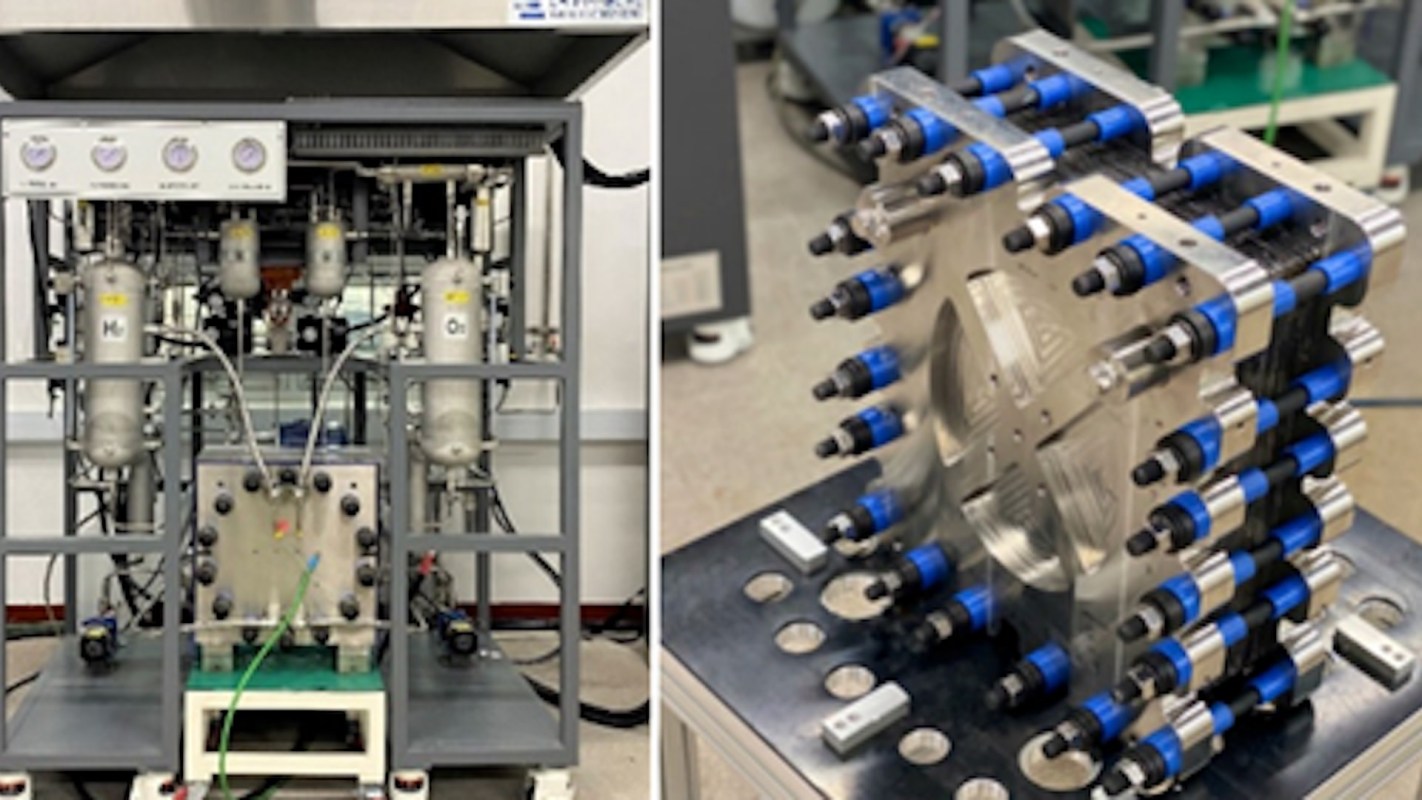The science behind a clean energy breakthrough from South Korea is a veritable tour of the periodic table, utilizing a collection of elements and compounds to create hydrogen without fossil fuels. The result could be game-changing for our transportation sector and beyond.
Experts from the Korea Institute of Energy Research are delivering the product in part by reducing ammonia to its core elements: hydrogen and nitrogen.
The innovation uses temperatures of around 1,112 degrees Fahrenheit to decompose the ammonia, according to TechXplore. To eliminate the need for fossil fuels, the team uses ruthenium, a platinum metal, as a "catalyst" during a process called pressure swing adsorption. It's a complex mix of elements, compounds, and technology that can create high temperatures and, ultimately, hydrogen fuel.
TechXplore published a graphic that highlights the differences between a conventional method and KIER's process. Simply put, the common technique inputs natural gas to help make heat, spewing air pollution. The Korean method doesn't use fossil fuels, as the experts can produce high temperatures with the mix of elements used in the technique.
Extra gas (a mix of hydrogen and nitrogen) generated during operation is put back into production to maintain the combustion needed to reduce the ammonia, per the diagram.
The reactor is housed in a square metal frame, which is filled with pipes, hoses, and gauges and includes a couple of hot water tank-sized cylinders.
Watch now: Most sustainable thing about the new Rivian? The price tag
However, what's missing might be the biggest news. The elimination of fossil fuels in the process results in the creation of hydrogen fuel with no planet-warming carbon dioxide emissions, all per the report by TechXplore.
KIER research lead Jung Unho said in the story that the discovery was significant.
And his assessment is backed by impressive results: "high-purity hydrogen of more than 99.97%," according to the summary.
TechXplore also noted that the product could power fuel cells for hydrogen electric vehicles. What's more, since ammonia is made partly with hydrogen, the experts think it can be a cost-effective state by which to transport and store the fuel element. Hydrogen can be reduced from the ammonia using KIER's clean process when needed, according to the team.
Hydrogen is already powering trains, planes, vehicles, and ships as part of innovations that are transforming the way we travel. But since natural gas is often used to make much of the hydrogen fuel now used, it's not necessarily pollution free, according to the Department of Energy.
Experts elsewhere are also developing cleaner ways to make the energy source, even using sunlight. Scientists at Cambridge, for example, have invented artificial leaves to produce fresh water and hydrogen. If proven scalable, the innovations could reduce the amount of planet-warming air pollution that is contributing to severe weather and other maladies.
The TechXplore story mentioned KIER's research into hydrogen fuel cells to cleanly power buildings as one way the technology can provide for a more planet-friendly energy future.
"As we scale up, we can also make a significant impact in the clean hydrogen power sector," Unho said.
Join our free newsletter for weekly updates on the coolest innovations improving our lives and saving our planet.








